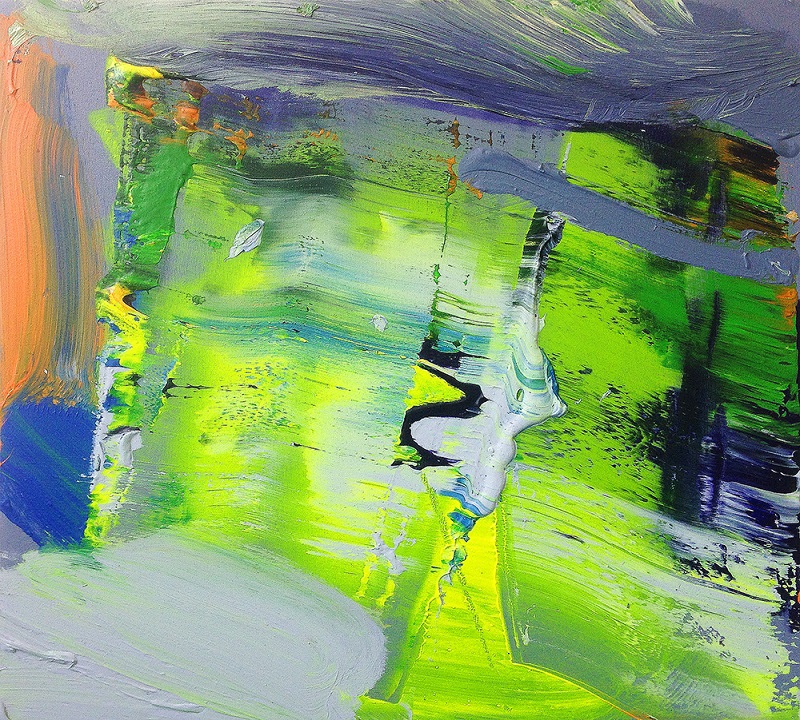Summary |
This research demonstrates a multiplicity of consciousness and of experiences. |
|---|---|
Start Date |
Mar 17, 2018 12:00 pm |
End Date |
Mar 28, 2018 5:00 pm |
Venue |
Plimsoll Gallery |
The Ontological Framing of Expanded Abstract Painting within Henri Bergson’s Principles of Movement, Duration, Intuition and Becoming.

Image credit: Untitled Composite 2017, mixed media on canvas, 80 x 72.5 cm
Opening event: Fri 16 March, 5.30 – 7.00 pm
Exhibition dates: Sat 17 Mar – Wed 28 Mar, 2018
Gallery Hours: Wed - Sun 12pm - 5pm (during exhibitions)
Closed Mondays, Tuesdays and Public holidays
Abstract:
In Creative Evolution (1911) Henri Bergson studied the mechanics of thought and illusion and articulated the concept of nothing in relation to problems of existence. He placed particular importance on creative activity as this is unquantifiable, complex and multi-layered but aspirational in the labouring and permutations of art and its making. (Deleuze, G, 1966, p.38) In this project, Bergson’s key principles of movement, duration, intuition and becoming are applied to abstract painting in order to frame a new ontological perspective.
The project draws from a specific lineage of abstract painting beginning with Kasimir Malevich’s notion of new realism which emphasises process and creation. This lineage has been applied to Bergson’s notion of Creative Evolution in order to re-envisage abstract painting. Referred to as expanded abstract painting, it provides a foundation for the practical research as an umbrella term and a vehicle for expression. Expanded abstract painting advocates an innate search for something, where there may actually be only nothing. It has characteristics, such as those evident in digital media, print media and sculpture, not conventionally associated with the medium of painting.
Bergson’s principle of movement as a shifting multiplicity of ideas and perceptions, is applied to this conundrum. Movement is a key strategy within this project as it mirrors the ontology of perception. In the course of this research it has been split into three categories; perceptual, actual and ideological. This division is reflected in the practical research as composite experience through the presentation of painted works, made from or juxtaposed as multiple different parts. With these layers of thinking in mind, the practical research demonstrates a multiplicity of consciousness and of experiences.
Duration is understood and perceived through processes of movement. Through the presentation of composite experience, the practical research will expand the convention of abstract painting and reveal how duration is multiplicity due to changing temporal conditions. Intuition is articulated and researched as method. Within the research intuition demonstrates a degree of pre-determined thought which in turn creates space for experimentation and openness. Other strategies such as not-thinking, not knowing and the deferral of consciousness inform the characteristics of intuition. Further to this the project demonstrates the application of intuitive strategy through mediated and un-mediated means. This is pursued through a performative studio based approach and through the mediated use of image reproduction technologies such as scanners and photocopiers. Both approaches reveal how an expanded abstract painting practice can create space for improvisation and lived experience.
The practical research is divided into four different series, in the chronological order they were made. The shift in approaches of these bodies of work within the project is framed as becoming; a state of transition and change, an unfolding of experience subject to multiplicity. Becoming is also framed in the project as a conflation of Bergson’s other philosophical principles; movement, duration and intuition.
Through the application of Bergson’s principles this research has established a new ontological reading of abstract painting as expanded. The ingredients of this expansion are significant as their specific characteristics have currency, that is, the mix of old and new technology is indicative of present circumstance. It positions abstract painting as an alternative to deterministic thinking in a period where imaging technology offers greater control than ever before. There is a life force or ‘elan vital,’ in the practical research, representative of a desire for freedom of expression.
As an evolved methodology this project demonstrates an important insight into a contemplation of phenomena and how we navigate ourselves in time. The significance of the ontology resides in the experiential analysis of Bergson’s memory and matter dualism through studio engagement. There is always something other than what is simply there. The investigation of Bergson’s paradoxes as visual art creates a sensation of doubt and anxiety but these are absorbed into process as motivations for transformation and change. These factors, as an ontological condition are part of a larger becoming. As was the case with Kasimir Malevich’s notion of new realism, there is an ongoing and unfolding revolution of consciousness through movement.
Bergson, H, 1998, Creative Evolution, re-publication of 1911 translation by Henry Holt and Company, New York, Dover Publications, Inc. Mineola, New York.
Deleuze, G 1966, Bergsonism, Zone Books, New York.